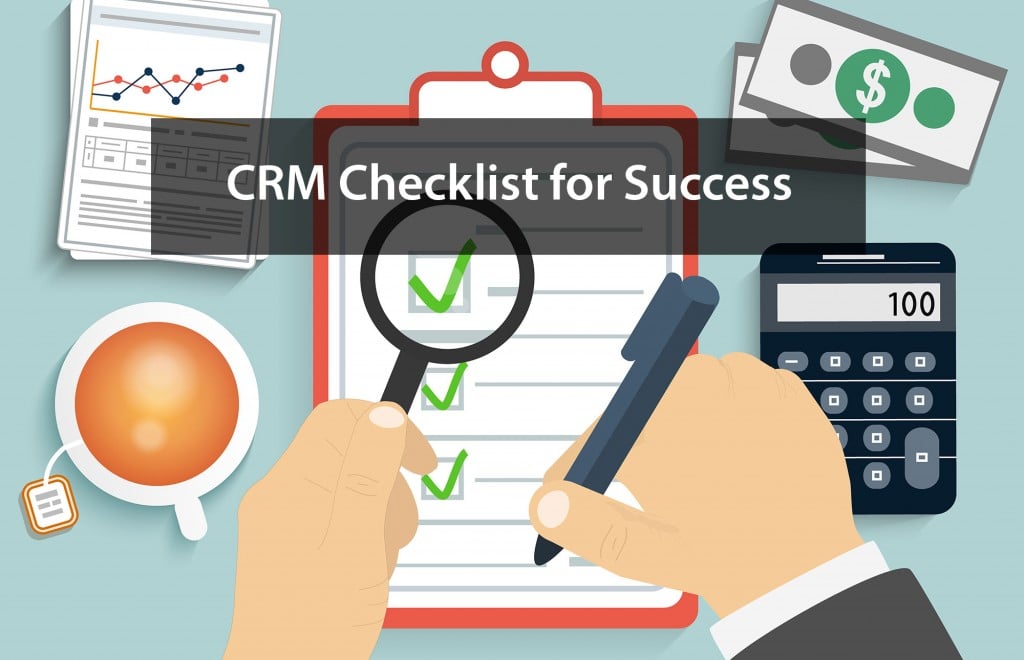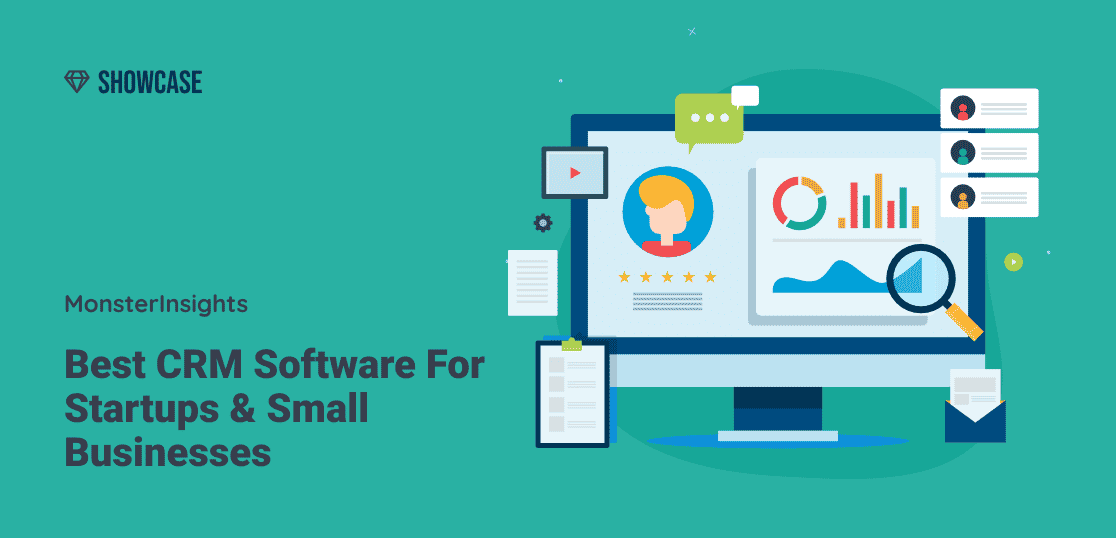
Introduction: Why Your Small Business Needs a CRM
Running a small business is a whirlwind. You’re juggling a million things – from product development and marketing to sales and customer service. In the midst of all this, it’s easy for customer relationships to fall by the wayside. That’s where a Customer Relationship Management (CRM) system comes in. Think of it as your central hub for everything customer-related. It’s where you store contact information, track interactions, manage leads, and ultimately, build stronger, more profitable relationships.
But choosing and implementing a CRM can feel daunting. With so many options and features, where do you even begin? That’s why we’ve created this comprehensive small business CRM checklist. It’s your step-by-step guide to selecting, implementing, and maximizing the value of a CRM for your business. This checklist will help you avoid common pitfalls and ensure you choose the right CRM that aligns with your unique needs and goals.
Phase 1: Assessing Your Needs and Defining Your Goals
Before you even look at CRM software, you need a clear understanding of your business needs and what you hope to achieve. This phase is all about self-assessment and strategic planning. Don’t rush this step; it’s the foundation for CRM success.
1. Analyze Your Current Customer Processes
- Map Your Customer Journey: How does a prospect become a customer? What touchpoints do they have with your business? Identify every interaction, from initial website visit to post-purchase support.
- Identify Pain Points: Where are your bottlenecks? What processes are inefficient or time-consuming? Are customer inquiries being missed? Are sales leads falling through the cracks? Pinpoint the areas where a CRM can provide the most benefit.
- Document Existing Systems: What tools are you currently using to manage customer data? (e.g., spreadsheets, email, contact management software). What are their limitations?
2. Define Your CRM Goals
What do you want to achieve with a CRM? Be specific and measurable. This will help you evaluate different CRM solutions and track your progress.
- Increase Sales: Set a target for sales growth (e.g., increase sales by 15% in the next year).
- Improve Customer Retention: Define a desired customer retention rate (e.g., reduce customer churn by 10%).
- Enhance Customer Satisfaction: Establish a metric for customer satisfaction (e.g., improve Net Promoter Score by X points).
- Streamline Processes: Identify specific processes you want to automate or improve (e.g., reduce the time it takes to respond to customer inquiries).
- Improve Lead Management: Define metrics for lead conversion rates.
3. Determine Your Budget
CRM costs vary widely, from free options to enterprise-level solutions. Consider the following cost factors:
- Subscription Fees: Per-user or tiered pricing models are common.
- Implementation Costs: Potential costs for setup, data migration, and customization.
- Training Costs: Expenses for training your team to use the CRM effectively.
- Ongoing Maintenance: Costs for support, updates, and potential integrations.
- Hidden Costs: Be mindful of potential add-on fees for storage, specific features, or exceeding usage limits.
4. Evaluate Your Team’s Technical Skills
Do your employees have the technical expertise to manage a complex CRM? If not, factor in the need for training or the option of a CRM that’s easier to use and deploy. Consider the following:
- Technical Proficiency: Assess your team’s comfort level with technology.
- Data Entry Skills: How comfortable are they with entering and managing data?
- Reporting and Analytics: Do they have experience with data analysis?
- Support and Training: What level of support will your team need?
Phase 2: Researching and Selecting the Right CRM
Now that you know what you need, it’s time to explore the market and find the CRM that best fits your requirements. This phase involves thorough research and careful consideration.
1. Identify Your Must-Have Features
Based on your goals and process analysis, create a list of essential CRM features. Prioritize the features that are critical to your success. Some common features to consider:
- Contact Management: Centralized storage of contact information, including names, addresses, phone numbers, and email addresses.
- Lead Management: Tools for tracking leads, qualifying them, and nurturing them through the sales pipeline.
- Sales Automation: Features to automate sales tasks, such as email sequences, task reminders, and deal tracking.
- Marketing Automation: Capabilities to automate marketing campaigns, such as email marketing, lead nurturing, and social media management.
- Reporting and Analytics: Tools to track key performance indicators (KPIs), generate reports, and analyze data.
- Customer Service and Support: Features to manage customer inquiries, track support tickets, and provide excellent customer service.
- Integrations: Compatibility with other tools you use, such as email marketing platforms, accounting software, and e-commerce platforms.
- Mobile Access: The ability to access the CRM on mobile devices.
- Customization: The ability to tailor the CRM to your specific business needs.
- Security: Robust security features to protect your customer data.
2. Research CRM Vendors
Once you have a list of must-have features, research different CRM vendors. Consider the following:
- Read Reviews: Check out customer reviews on websites like G2, Capterra, and TrustRadius.
- Compare Pricing: Compare pricing plans from different vendors.
- Assess Scalability: Ensure the CRM can scale as your business grows.
- Evaluate Support Options: Consider the vendor’s support options (e.g., phone, email, chat, knowledge base).
- Consider Free Trials or Demos: Take advantage of free trials or demos to test the CRM before you commit.
- Check Integration Capabilities: Ensure the CRM integrates with your existing tools.
3. Create a Shortlist of CRM Options
Based on your research, narrow down your options to a shortlist of 2-3 CRM solutions. This will make the evaluation process more manageable.
4. Conduct a Detailed Evaluation
Now it’s time to thoroughly evaluate the shortlisted CRM options. This may involve:
- Free Trials: Use the free trial period to test the CRM’s features and functionality.
- Demo Requests: Request a personalized demo from each vendor.
- Feature Comparison: Create a spreadsheet to compare the features of each CRM.
- Usability Testing: Have members of your team test the CRM to assess its ease of use.
- Data Migration Testing: Attempt to import sample data to ensure a smooth data migration process.
- Pricing Comparison: Compare the total cost of ownership, including subscription fees, implementation costs, and training expenses.
5. Choose the Right CRM for Your Business
Based on your evaluation, select the CRM that best meets your needs and aligns with your budget. Consider the long-term implications of your choice.
Phase 3: Implementing Your CRM System
Choosing a CRM is just the first step. Implementing it effectively is crucial for success. This phase requires careful planning, execution, and ongoing monitoring.
1. Develop an Implementation Plan
Create a detailed implementation plan that outlines the steps involved in setting up and deploying the CRM. This plan should include:
- Project Timeline: Establish a realistic timeline for implementation.
- Team Responsibilities: Assign roles and responsibilities to team members.
- Data Migration Strategy: Plan how you will migrate data from your existing systems to the CRM.
- Customization Plan: Outline any customizations you need to make to the CRM.
- Training Plan: Develop a training plan for your team.
- Communication Plan: Communicate the implementation plan to your team.
2. Data Migration
Data migration is a critical step. Ensure you have a clean and accurate dataset. Consider the following:
- Data Cleaning: Clean your existing data to remove duplicates, correct errors, and standardize formats.
- Data Mapping: Map your existing data fields to the corresponding fields in the CRM.
- Data Import: Import your data into the CRM.
- Data Validation: Verify that the data has been imported correctly.
- Backup Your Data: Always back up your data before and after migration.
3. Customization
Customize the CRM to meet your specific business needs. This may involve:
- Configuring Settings: Configure the CRM’s settings to match your business processes.
- Creating Custom Fields: Create custom fields to store unique data points.
- Designing Workflows: Design workflows to automate tasks and streamline processes.
- Integrating with Other Tools: Integrate the CRM with your other tools.
4. Training Your Team
Provide comprehensive training to your team. This is essential for user adoption and CRM success. Consider the following:
- Develop a Training Curriculum: Create a training curriculum that covers all aspects of the CRM.
- Provide Hands-On Training: Provide hands-on training to your team.
- Create Training Materials: Create training materials, such as user manuals, videos, and cheat sheets.
- Offer Ongoing Support: Offer ongoing support to your team.
- Encourage Feedback: Encourage your team to provide feedback on the CRM.
5. Testing and Refinement
Before you fully launch the CRM, test it thoroughly. This will help you identify and resolve any issues. Consider the following:
- User Acceptance Testing (UAT): Have your team test the CRM to ensure it meets their needs.
- Workflow Testing: Test your workflows to ensure they are working correctly.
- Reporting Testing: Test your reports to ensure they are accurate.
- Refinement: Make any necessary adjustments to the CRM based on the testing results.
6. Go Live!
Once you’ve completed the implementation steps, you’re ready to launch the CRM. Communicate the launch to your team and provide ongoing support.
Phase 4: Optimizing and Maintaining Your CRM
The work doesn’t stop once the CRM is implemented. Ongoing optimization and maintenance are essential to maximize its value. This phase is about continuous improvement.
1. Monitor and Analyze Key Performance Indicators (KPIs)
Track your progress towards your CRM goals by monitoring key performance indicators (KPIs). Some common KPIs to track include:
- Sales Conversion Rate: The percentage of leads that convert into customers.
- Customer Retention Rate: The percentage of customers who remain customers over a period of time.
- Customer Satisfaction Score (CSAT): A measure of customer satisfaction.
- Net Promoter Score (NPS): A measure of customer loyalty.
- Lead Response Time: The time it takes to respond to a lead.
- Sales Cycle Length: The time it takes to close a deal.
2. Regularly Review and Refine Your Processes
Continuously review and refine your processes to identify areas for improvement. This may involve:
- Process Audits: Conduct regular audits of your processes.
- Feedback Gathering: Gather feedback from your team and your customers.
- Process Optimization: Optimize your processes based on the feedback you receive.
3. Provide Ongoing Training and Support
Provide ongoing training and support to your team to ensure they are using the CRM effectively. This may involve:
- Refresher Training: Provide refresher training on a regular basis.
- New Feature Training: Train your team on any new features that are added to the CRM.
- Support Resources: Provide access to support resources, such as user manuals, videos, and FAQs.
- Internal Support: Designate a CRM champion within your team.
4. Stay Up-to-Date with CRM Updates
CRM vendors regularly release updates and new features. Stay up-to-date with these updates to take advantage of the latest improvements. Make sure that any updates or changes don’t negatively impact your existing processes.
5. Integrate with New Tools
As your business grows, you may need to integrate your CRM with new tools. Explore new integration options to enhance the functionality of your CRM.
6. Data Security and Compliance
Ensure your CRM is secure and compliant with all relevant data privacy regulations. This includes:
- Regular Backups: Regularly back up your data.
- Access Control: Implement strict access controls to limit access to sensitive data.
- Data Encryption: Encrypt your data to protect it from unauthorized access.
- Compliance: Ensure your CRM complies with relevant data privacy regulations, such as GDPR and CCPA.
CRM Checklist Summary
Here’s a quick recap of the key steps in this CRM checklist:
- Needs Assessment and Goal Setting: Analyze your current processes, define your goals, and determine your budget.
- CRM Research and Selection: Identify your must-have features, research vendors, and conduct a detailed evaluation.
- CRM Implementation: Develop an implementation plan, migrate your data, customize the CRM, train your team, and test thoroughly.
- CRM Optimization and Maintenance: Monitor your KPIs, refine your processes, provide ongoing training, stay up-to-date with updates, integrate with new tools, and ensure data security and compliance.
Conclusion: Reap the Rewards of a Well-Managed CRM
Implementing and effectively utilizing a CRM is a game-changer for small businesses. By following this checklist, you can streamline your customer relationship management, boost sales, improve customer satisfaction, and drive sustainable growth. Remember, a CRM is an investment in your future. It’s an ongoing process, not a one-time event. By consistently optimizing your CRM, you’ll be well on your way to building stronger customer relationships and achieving your business goals.
Don’t be afraid to start small and scale up as your business grows. The most important thing is to get started and start leveraging the power of a CRM to transform your business. Good luck!


